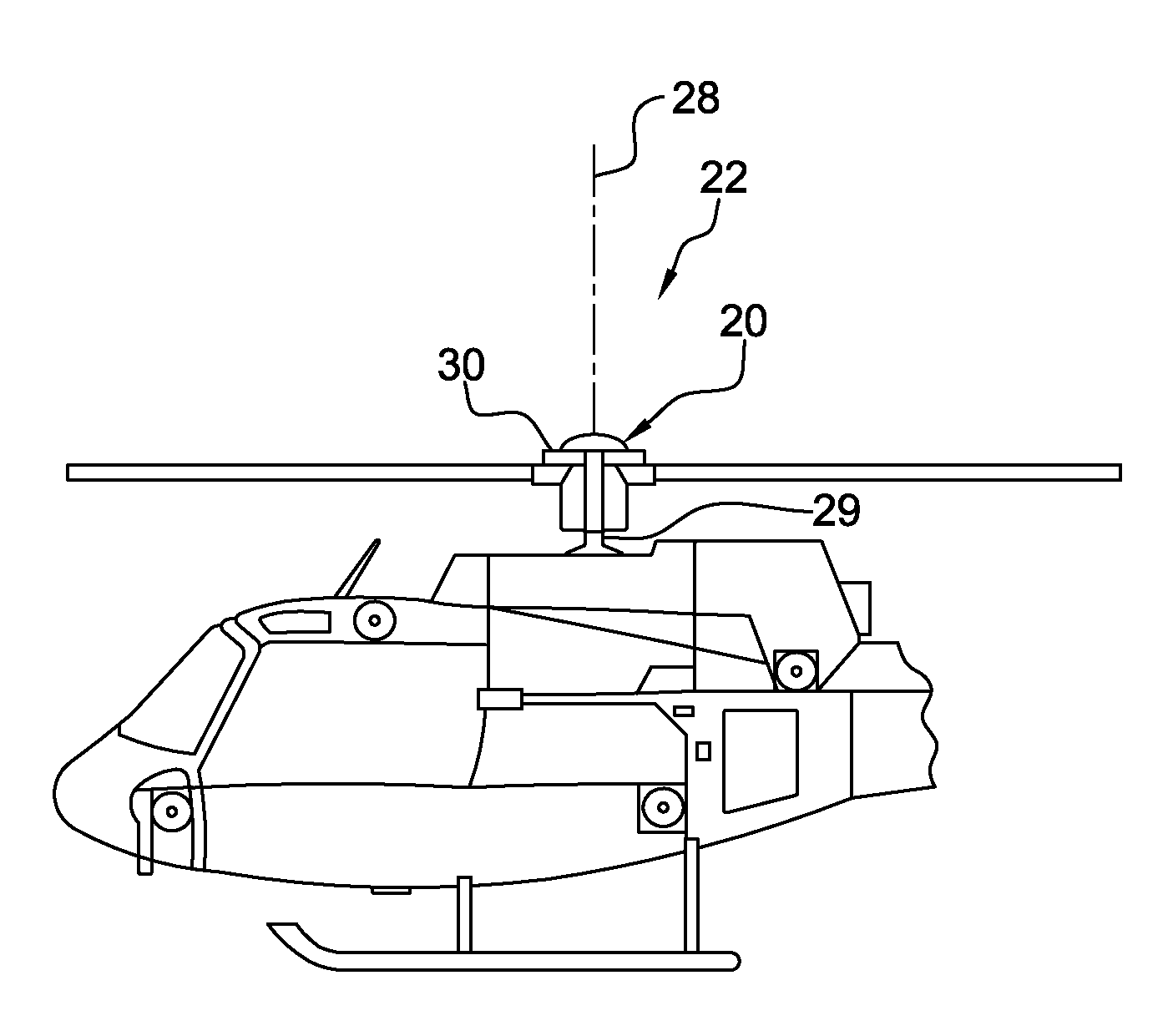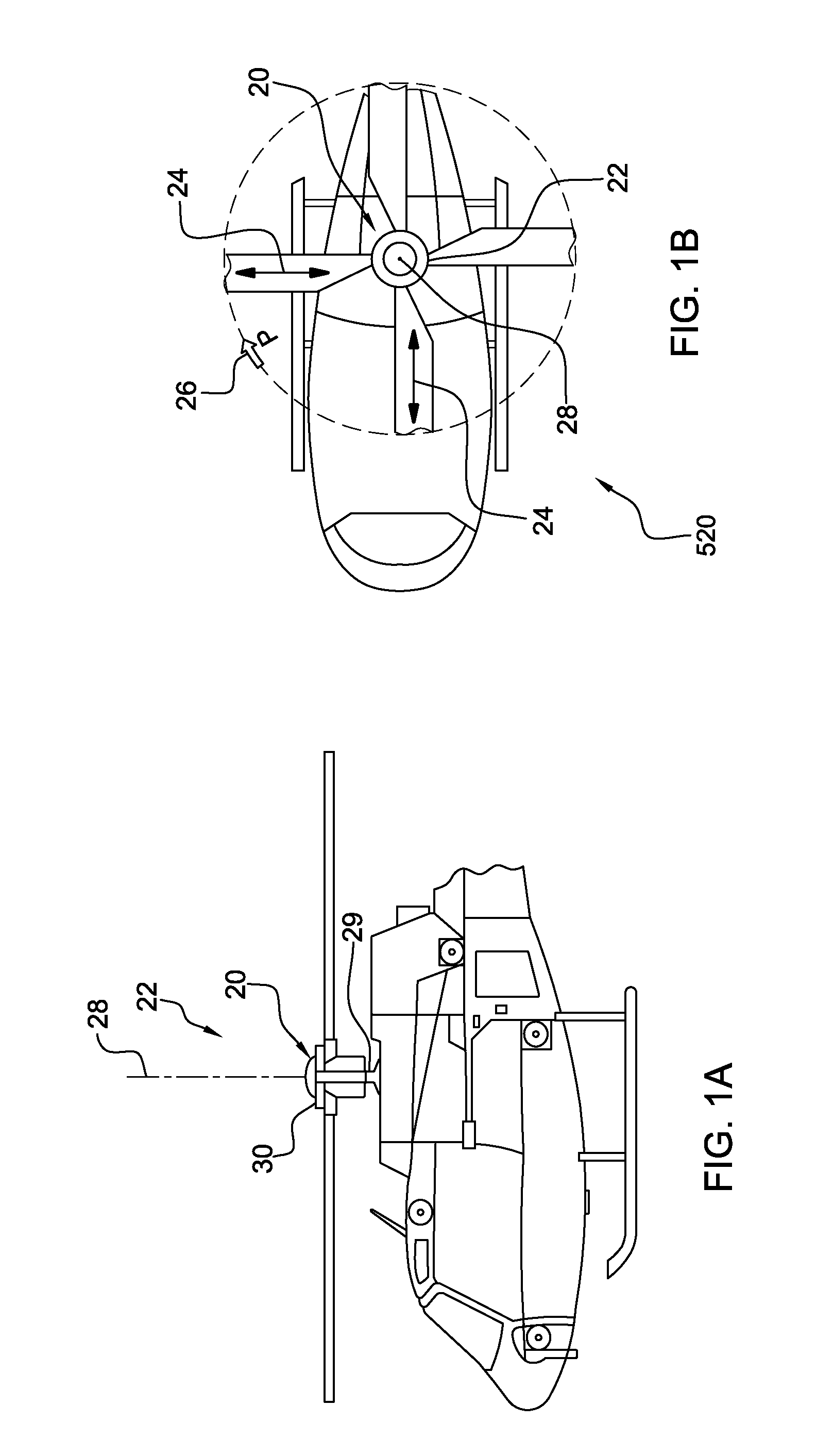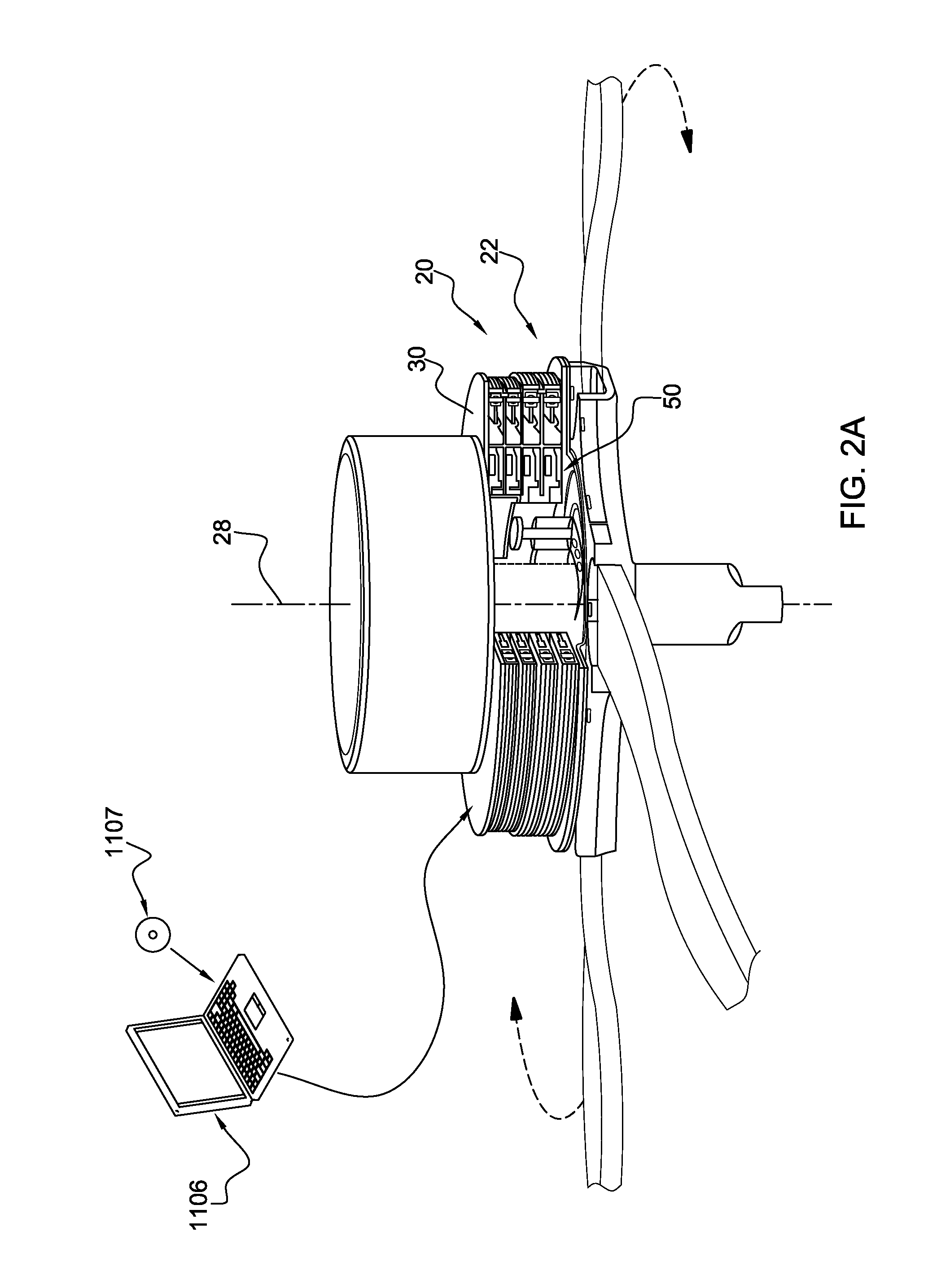Helicopter vibration control system and rotating assembly rotary forces generators for canceling vibrations
a technology of vibration control system and generator, which is applied in the direction of rotors, machines/engines, textiles and paper, etc., can solve the problems of aircraft equipment and occupants being fatigued and worn, damage to the actual structure and components of the vehicle,
- Summary
- Abstract
- Description
- Claims
- Application Information
AI Technical Summary
Benefits of technology
Problems solved by technology
Method used
Image
Examples
Embodiment Construction
[0028]Additional features and advantages of the invention will be set forth in the detailed description which follows, and in part will be readily apparent to those skilled in the art from that description or recognized by practicing the invention as described herein, including the detailed description which follows, the claims, as well as the appended drawings.
[0029]Reference will now be made in detail to the present preferred embodiments of the invention, examples of which are illustrated in the accompanying drawings.
[0030]In an embodiment the invention includes a rotary blade rotary wing aircraft rotating hub mounted rotating assembly vibration control system for a rotary blade rotary wing aircraft rotating hub assembly experiencing a vibration of a plurality of vibration frequencies while rotating at an operational rotation frequency about a rotating assembly center axis of rotation. FIG. 1A-B illustrate a rotary blade rotary wing aircraft rotating hub mounted rotating assembly ...
PUM
 Login to View More
Login to View More Abstract
Description
Claims
Application Information
 Login to View More
Login to View More - R&D
- Intellectual Property
- Life Sciences
- Materials
- Tech Scout
- Unparalleled Data Quality
- Higher Quality Content
- 60% Fewer Hallucinations
Browse by: Latest US Patents, China's latest patents, Technical Efficacy Thesaurus, Application Domain, Technology Topic, Popular Technical Reports.
© 2025 PatSnap. All rights reserved.Legal|Privacy policy|Modern Slavery Act Transparency Statement|Sitemap|About US| Contact US: help@patsnap.com



